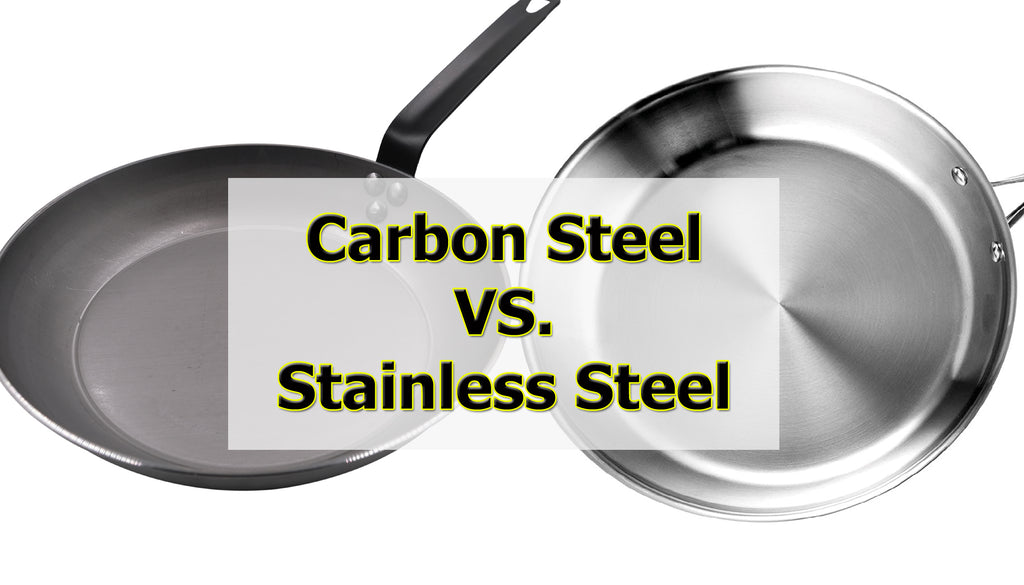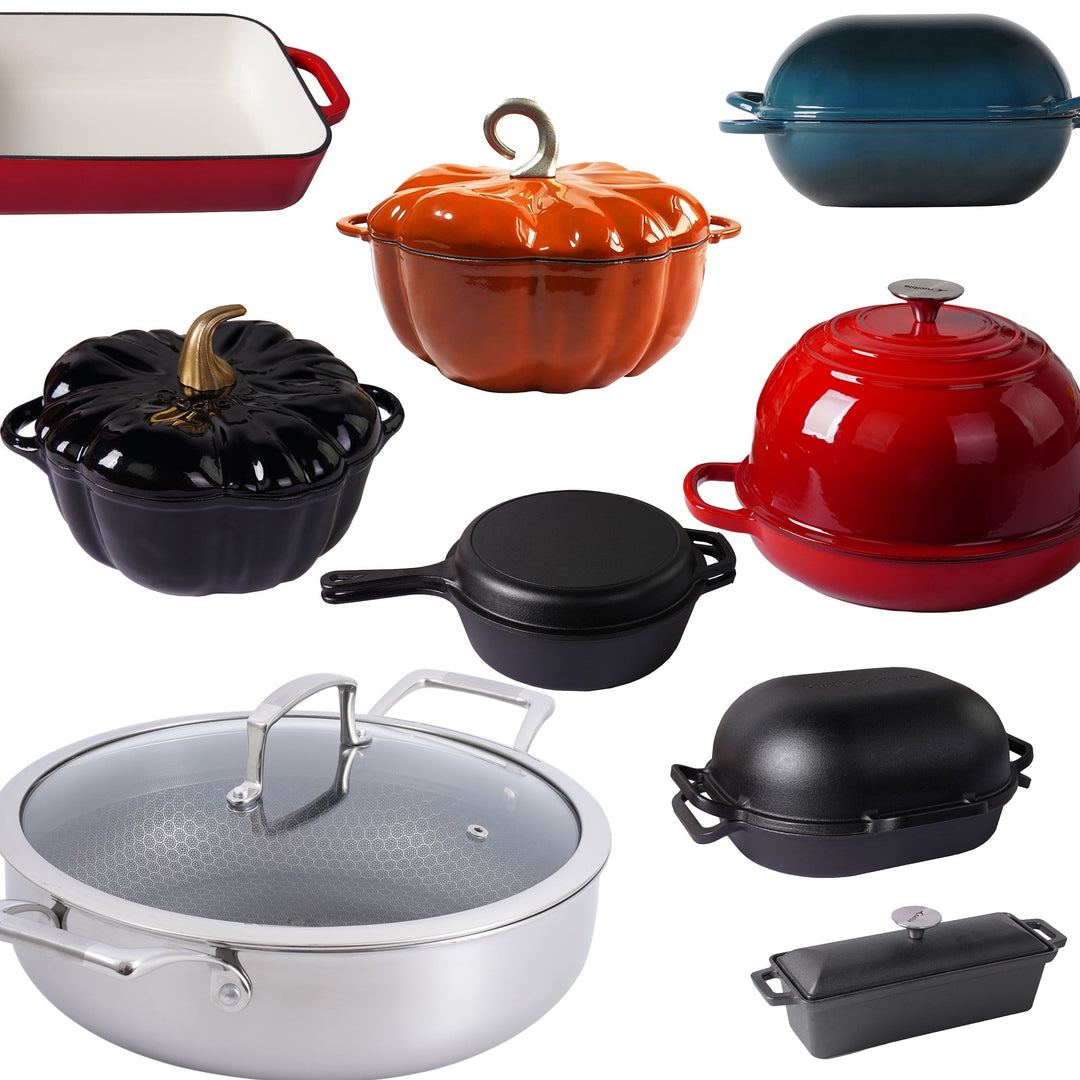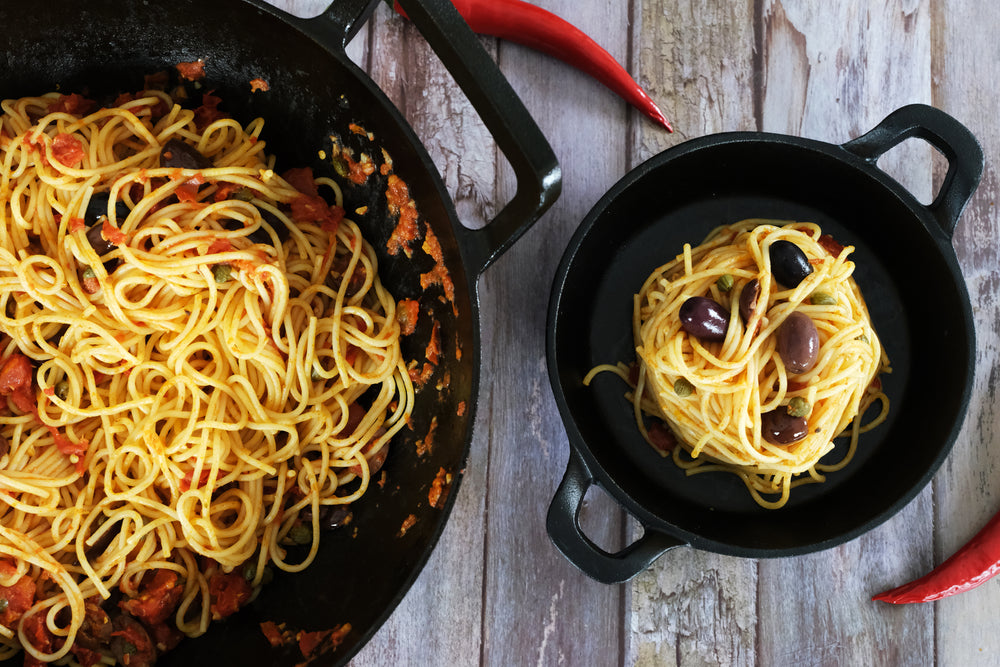Vilken stekpanna är bäst, kolstålspannor eller rostfria stålspannor?

I denna artikel kommer vi inte att avgöra vilket material som är bäst eftersom vad som är bäst för dig beror på dina specifika behov, men vi kan ge dig informationen du behöver för att fatta ett välgrundat beslut.
Först, en kort sammanfattning innan vi presenterar våra 7 jämförelsepunkter.
En kolstålspanna är gjord av järn och kol medan rostfritt stål måste innehålla 11% krom och upp till sju ytterligare metaller, rostfritt stål har rostskydd (vilket måste skapas på kolstål med inbränning) men också sämre värmeledningsförmåga.
Eftersom kolstål har naturliga inbrännings-egenskaper när det är rätt inbränt, kan du använda mindre olja eller fett vid matlagning vilket gör det till ett hälsosammare alternativ och dessutom innebär bättre inbränning att det är lättare att rengöra.
Kolstålspannor har bättre värmeledningsförmåga och kan värmas till högre temperaturer än rostfritt stål.

Det finns ett antal egenskaper att ta hänsyn till när man jämför kolstål och rostfria stålstekpannor, nedan är de vanligaste.
- Korrosionsbeständighet: Kolstålspannor är korrosionsbeständiga, men rostfritt stål heter som det gör av en anledning. Den förstnämnda kommer att utveckla rost om den inte behandlas korrekt, medan den senare har rostskydd tack vare legeringsblandningen i stålet.
- Värmeledningsförmåga: Rostfria stålpannor presterar inte bra när det gäller värmeledningsförmåga om de inte kompletteras med en metallisk legering som koppar, vilket kan hjälpa till att öka värmebehållningen. Värmefördelning är däremot inget problem för rostfria stålpannor. Kolstålstekpannor är mycket bättre värmeledare och förblir därför varma mycket längre när de tas bort från värmekällan, vilket är hjälpsamt så att pannan inte förlorar sin värme när kall mat tillsätts.
- Diskmaskinssäkerhet: Kolstålprodukter kräver handtvätt eftersom de kan deformeras och rosta i diskmaskiner. Rostfria stålpannor är däremot diskmaskinssäkra.
- Fastklibbningsbenägenhet: Även om varken kolstålspannor eller rostfria stålspannor är helt non-stick, är kolstålspannor den klara vinnaren i detta avseende vilket betyder att det är lättare för mat att fastna på ytan i en panna av rostfritt stål. Applicera en inbränning på båda typerna för bästa resultat.
- Temperaturtålighet: Båda materialen klarar höga temperaturer, men mat i en kolstålspanna kan ta upp mer värme totalt. En panna i rostfritt stål kan försvagas om botten av pannan kommer i kontakt med en exceptionellt hög värmekälla.
- Vikt: Ingen av pannorna är lika tunga som en gjutjärnspanna, kolstålspannor är generellt lite tyngre att lyfta än sina motsvarigheter i rostfritt stål.
- Mångsidighet: Både rostfritt stål och kolstål är flexibla och fungerar bra för många olika typer av recept och matlagningsmetoder. Båda pannorna är mycket mångsidiga och båda är ugnssäkra och fungerar bra på induktionshällar.

















Lämna en kommentar